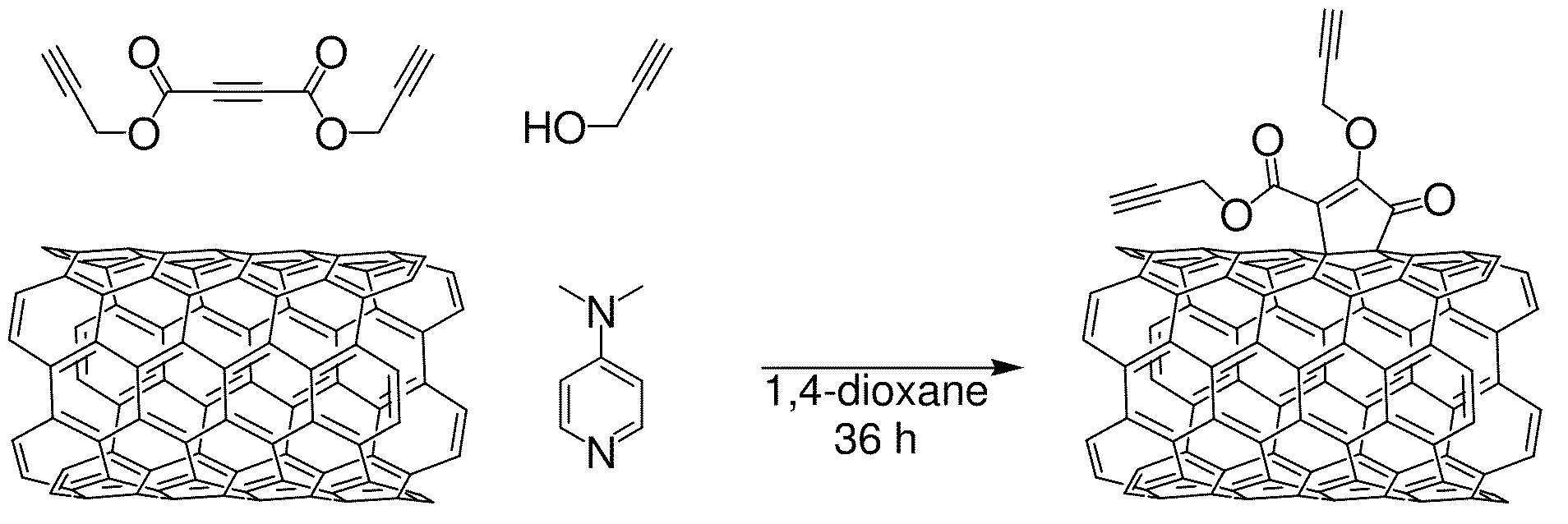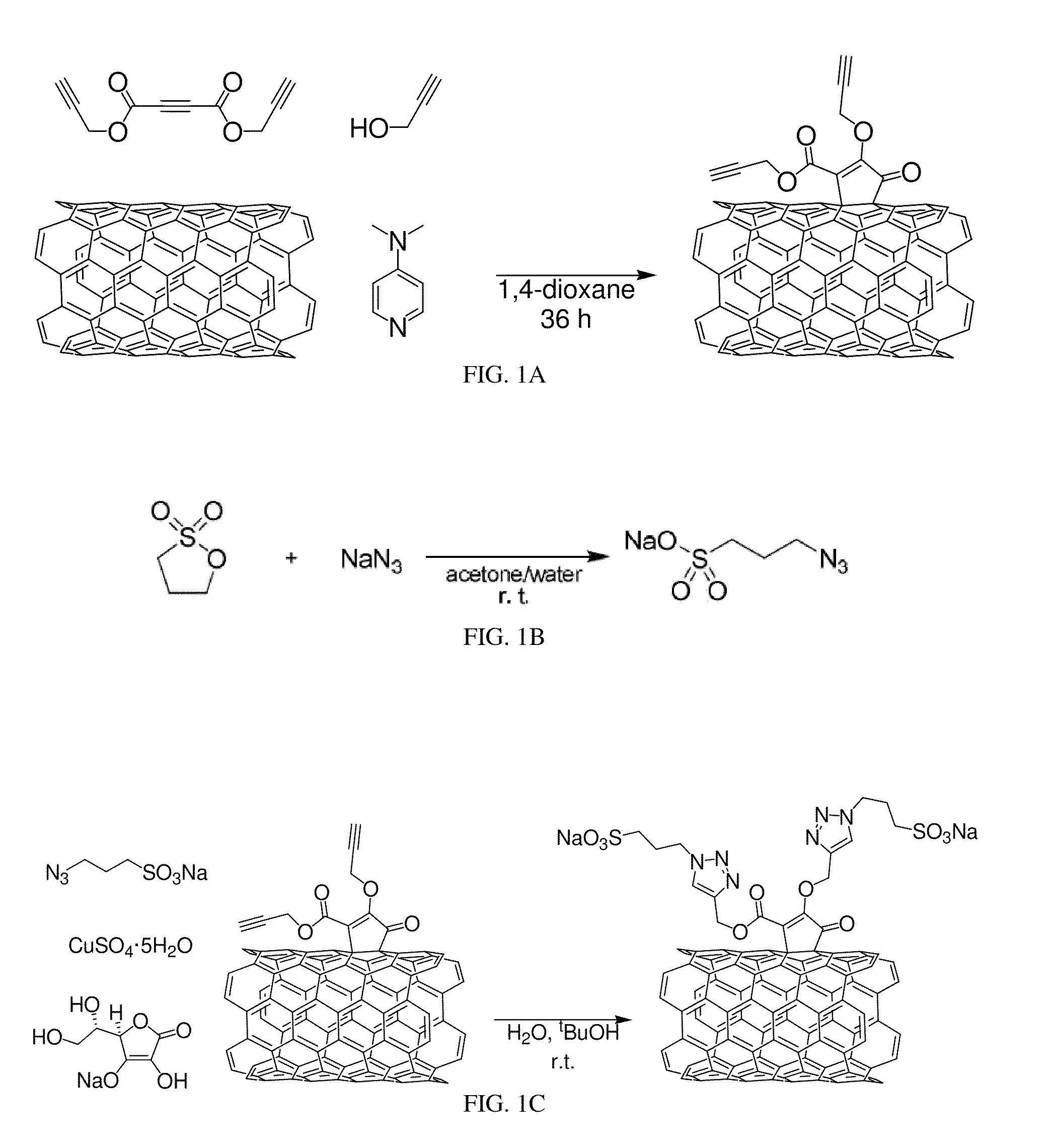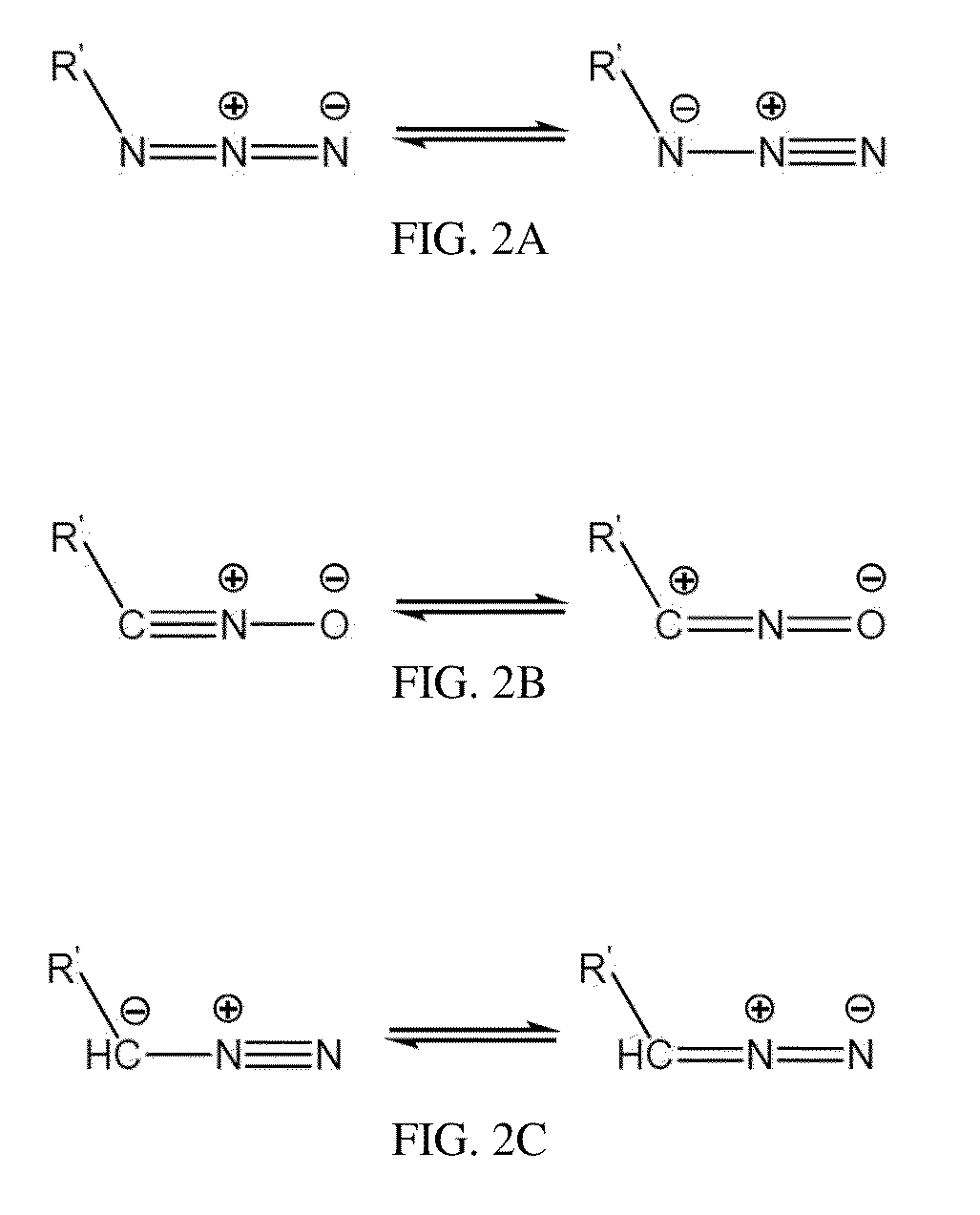High charge density structures, including carbon-based nanostructures and applications thereof
a carbon nanotube and high charge density technology, applied in the field of high charge density structure, including carbon nanotubes, can solve the problems of difficult solvent processing and dispersibility, low solubility, and inability to incorporate a wide range of functional groups on the carbon nanotubes, and achieve high density functionalization of the carbon nanotubes
- Summary
- Abstract
- Description
- Claims
- Application Information
AI Technical Summary
Problems solved by technology
Method used
Image
Examples
example 1
[0119]The following example describes the synthesis of a multi-walled carbon nanotube comprising a high density of charged sulfonate groups.
[0120]A multi-walled carbon nanotube was functionalized according to the reaction shown in FIG. 1A. 240 mL of 1,4-dioxane was added to multi-walled carbon nanotubes (2.4 g Baytubes C 150 P, purchased from Bayer). The suspension was sonicated for 4 hours. Subsequently, dipropargyl acetylenedicarboxylate (˜28.5 g, 0.15 mol) in about 50 mL of 1,4-dioxane and 4-dimethylaminopyridine (˜9.16 g, 0.05 mol) in about 50 mL of CHCl3 were added over approximately 36 hours at approximately 90° C. Propargyl alcohol (˜8.49 g, 0.15 mol) was added and the reaction mixture was kept at approximately 90° C. for about 6 hours before being cooled to room temperature. The soluble components were removed by centrifugation and decanting of the solution. The black residue was transferred to a soxhlet apparatus and side products were extracted with acetone over about 24 h...
example 2
[0124]This example describes solubility studies of CNTs-B prepared in Example 1 in water. A suspension was prepared comprising 6 mL of water and 300 mg of functionalized carbon nanotubes prepared according to Example 1. (FIG. 3A) The suspension was agitated (e.g., stirred) for 12-36 hours. After a 12 hour period, 43+ / −2 mg of the functionalized carbon nanotubes were dispersed in the water. After a 36 hour period, 49+ / −2 mg of the functionalized carbon nanotubes were dispersed in the water. The solution comprising the functionalized carbon nanotubes (1 mL) was placed on a glass slide and the solvent was left to evaporate, as shown in FIG. 3C. The resulting film was removed from the glass plate, as shown in FIG. 3B, thus forming a free-standing film. FIG. 3E shows a microscope image of the droplet. FIG. 3F shows a microscope image of a thin film of the dispersion.
example 3
[0125]The following example describes films that were formed using CNTs-B prepared according to Example 1. FIG. 4A shows a vial comprising water (left) and a vial comprising 43.62 mg of CNTs-B prepared according to Example 1 (right) in 2 mL water which was sonicated for 5 minutes after 2 hours. FIG. 4B shows the solution comprising CNTs-B prepared according to Example 1 after 1 day following dilution of the solution (30 uL) in 1 mL of water. Dichloromethane (1 mL) was also added to the vial. FIG. 4C shows the vial after shaking FIG. 4D shows a 1 uL (left) and a 10 uL (right) droplet comprising 20.11 mg of CNTs-B prepared according to Example 1 in 500 uL of water. The solutions were sonicated for 5 minutes, vortexed for 20 seconds, and the solution was left to sit for 1 day prior to placing the droplet of the slide.
PUM
| Property | Measurement | Unit |
|---|---|---|
| Concentration | aaaaa | aaaaa |
| Concentration | aaaaa | aaaaa |
| Concentration | aaaaa | aaaaa |
Abstract
Description
Claims
Application Information
 Login to View More
Login to View More - R&D
- Intellectual Property
- Life Sciences
- Materials
- Tech Scout
- Unparalleled Data Quality
- Higher Quality Content
- 60% Fewer Hallucinations
Browse by: Latest US Patents, China's latest patents, Technical Efficacy Thesaurus, Application Domain, Technology Topic, Popular Technical Reports.
© 2025 PatSnap. All rights reserved.Legal|Privacy policy|Modern Slavery Act Transparency Statement|Sitemap|About US| Contact US: help@patsnap.com



